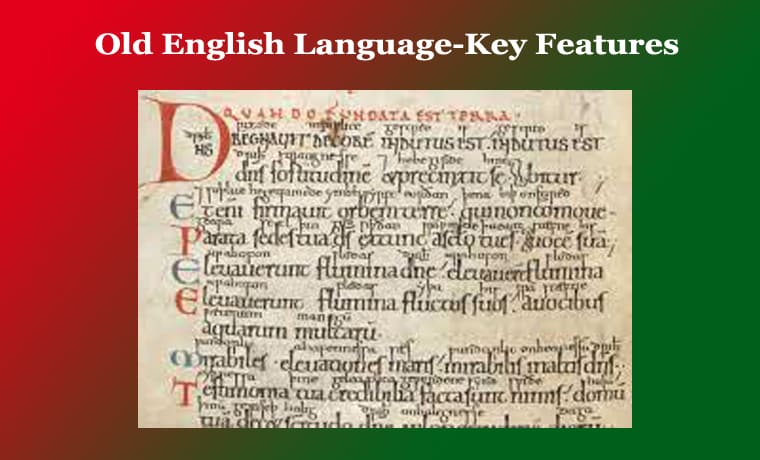Old English Language-Key Features
Table of Contents
Old English Language-Key Features
Introduction
Old English, employed in England from around 450 AD to 1150 AD, played a pivotal role in shaping the foundations of the contemporary English language. Its distinctive characteristics denote a formative phase in linguistic history, deeply rooted in Germanic origins but molded by interactions with diverse cultures during early medieval England.
Old English Language-Key Features
Germanic Roots:
Old English emerged from the language spoken by Germanic tribes, notably the Angles, Saxons, and Jutes, who settled in England. These linguistic roots shared many similarities with other Germanic languages, featuring words, grammar, and structures significantly distinct from present-day English.
Complex Grammar:
The grammar of Old English was intricate, boasting a more complex structure compared to modern English. Inflections were employed to convey gender, number, and case, akin to the contemporary use of “he, his, him.” Nouns, pronouns, adjectives, and verbs underwent changes in form to signify their roles in sentences.
Influence from Other Languages:
Old English existed within a dynamic linguistic environment, interacting with various languages due to historical events. Norse invaders, Latin-speaking Christian missionaries, and the Norman Conquest in 1066 introduced Norse, Latin, and French words into the language, enriching its vocabulary.
Limited Vocabulary:
The lexicon of Old English was notably smaller than that of present-day English. It featured multiple words for concepts and objects, which are now expressed by a single term in modern English. This reflects a more descriptive and specific linguistic approach.
Different Sounds and Orthography:
Old English sounds differed from contemporary English, and its written form utilized a distinct alphabet that included letters and characters now obsolete. This led to significant variations in pronunciation and spelling, contributing to the language’s historical evolution.
Conclusion
These characteristics collectively depict a language rich in history and cultural influences, laying the groundwork for the linguistic evolution that ultimately resulted in modern English. Old English represents a crucial chapter in the story of language development, showcasing the amalgamation of diverse linguistic elements. 0 0 0.
You May Like:













